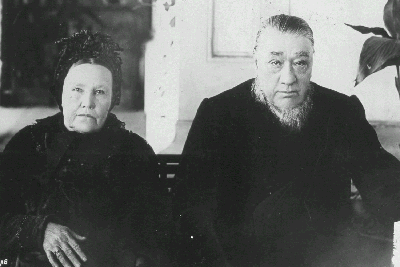|
Settling in the Transvaal

|
The trekkers crossed the Vaal River in 1838 and at first stayed in the area that is known today as Potchefstroom. Kruger's father later decided to settle in the district now known as Rustenburg. At the age of 16, Paul Kruger was entitled to choose a farm for himself at the foot of the Magaliesberg where he settled in 1841.
The following year he married Maria du Plessis and the young couple accompanied Casper Kruger to live in the Eastern Transvaal for a while. After the family had returned to Rustenburg, Kruger's wife and infant son died, probably from malaria. He then married Gezina du Plessis, who was his constant and devoted companion until her death in 1901. Seven daughters and nine sons were born of the marriage, some dying in infancy.
|